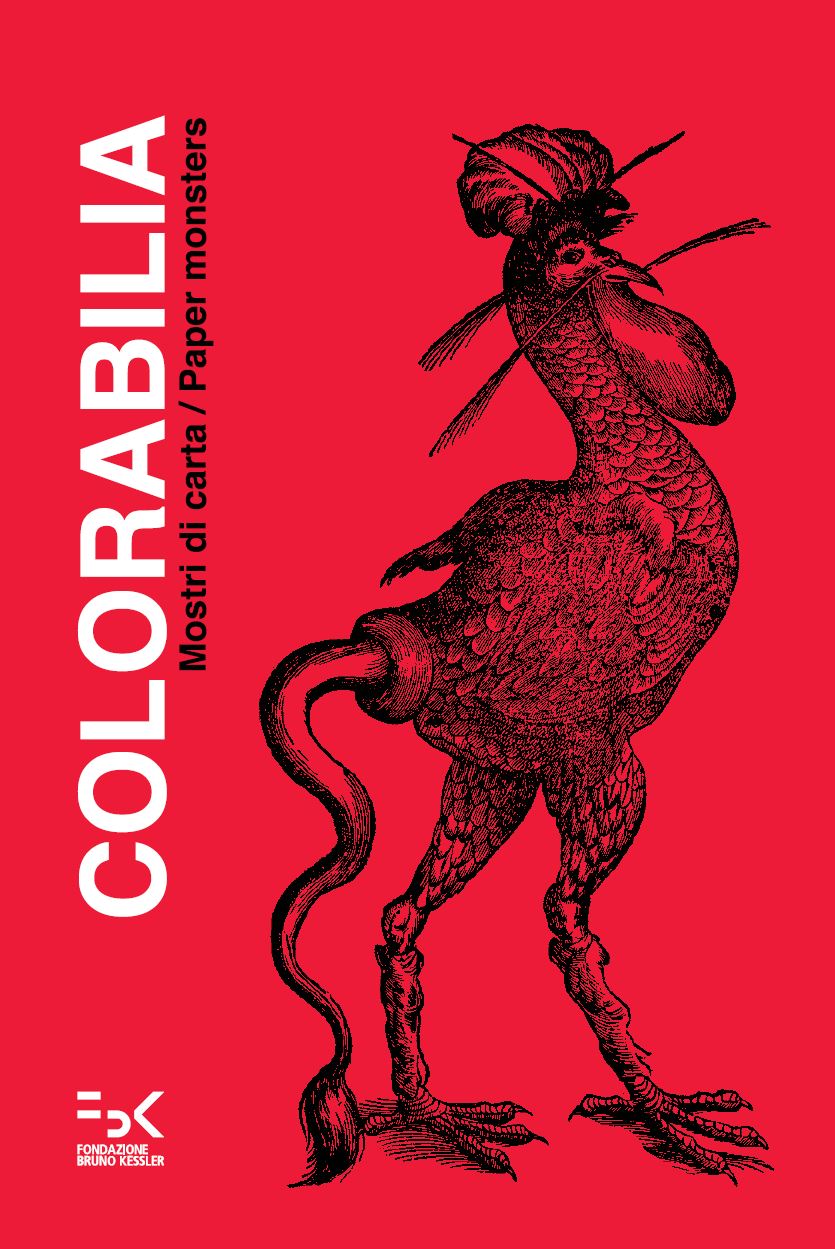Libro
Il patrimonio culturale è di tuttə: per questo la Biblioteca della Fondazione Bruno Kessler ha deciso di condividere alcune xilografie del proprio patrimonio bibliografico, rendendole disponibili a un largo pubblico attraverso questo volume, realizzato insieme al Servizio Comunicazione e Relazioni Esterne. A partire dal 2023, inoltre, la Biblioteca FBK partecipa all’iniziativa #ColorOurCollections della New York Academy of Medicine Library, che ogni anno coordina oltre 100 istituzioni culturali nella creazione di colouring book con immagini provenienti dai loro volumi antichi. Immagini da colorare, ricreare, trasformare in nuove forme o media, e condividere; la cultura è bella quando è libera e non pone limiti al processo creativo.
La xilografia è una tecnica di stampa utilizzata in Europa a partire dal XV secolo, ma diffusa in Asia da molto prima (in Giappone è attestata fin dall’VIII secolo). È caratterizzata da linee spesse, ottenute imprimendo su carta o tessuto una matrice in legno intagliata: si presta quindi a creare immagini nitide, con ampi spazi vuoti che possono essere colorati. Nelle xilografie della prima età moderna il colore si poteva ottenere tramite una o più impressioni a inchiostro colorato (soprattutto nero e rosso, ma anche in altri colori o in oro), oppure con un’applicazione successiva dei pigmenti (spesso ad acquerello).
Le xilografie dell’epoca sono notevoli non solo per la loro bellezza: furono uno strumento potente di diffusione della scienza. L’enciclopedia naturalistica del filosofo bolognese Ulisse Aldrovandi (1522-1605), da cui proviene la maggior parte delle immagini contenute in questo colouring book, è ricca di raffigurazioni di animali — veri o fantastici — e di dettagliate descrizioni della loro fisiologia, del loro comportamento e del loro posto nella cultura classica, medievale e moderna. Alla sua morte Aldrovandi lasciò le matrici xilografiche, intagliate per lui da Cristoforo Coriolano (1540-?), al Senato bolognese; si trovano oggi alla Biblioteca Universitaria di Bologna e al Museo di Palazzo Poggi. La Biblioteca FBK, tra i suoi 1.800 libri rari, conserva tre volumi delle edizioni secentesche dell’opera.
***
Cultural heritage belongs to all of us: this is why the Bruno Kessler Foundation Library has taken the initiative to share a number of woodcuts from its book collections and make them available to the public through this colouring book, created jointly with FBK Communication & External Relations. As of 2023, the Library will also be taking part in #ColorOurCollections, an annual campaign coordinated by The New York Academy of Medicine Library that sees over 100 cultural institutions create a colouring book using illustrations from their rare books. These images are for you to colour in, recreate, reimagine in whatever shape or medium you like, and share: this is the beauty of open culture - there are no limits to your creativity.
Woodcut is a printmaking technique that was first used in Europe in the fifteenth century, though it had been known in Asia long before that (it is documented in Japan as early as the eighth century). A relief process, it entails carving a block of wood which, when pressed into paper or fabric, leaves neat impressions and ample blank spaces for colour. In early modern woodcuts, colour was achieved either through one or several rounds of printing (often in black and red ink, but other colours or even gold were also used), or through the application of (typically) a wash.
Early modern woodcuts are not just beautiful to look at: they were a powerful tool for the diffusion of scientific knowledge. The natural history encyclopedia by the Bolognese philosopher Ulisse Aldrovandi (1522-1605), which is the source of most of the illustrations in this colouring book, contains a wealth of depictions of animals (of both the real and fantastic variety) with detailed descriptions of their physiology, behaviours and place in ancient, medieval and early modern culture. Upon his death, Aldrovandi left his wooden blocks, which had been carved for him by Cristoforo Coriolano (b. 1540), to the Senate of Bologna; today, they are held at the Bologna University Library and at the Palazzo Poggi Museum. Three sixteenth-century editions of Aldrovandi’s works are held in the special collections (ca. 1,800 items) of the FBK Library.


